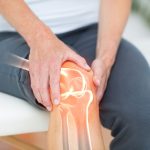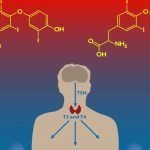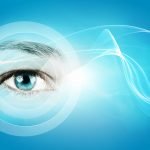Acupuncture for Essential Hypertension
Mordy Levy, MD, DC, ND
Hypertension, specifically essential hypertension, affects one-third of all adults in North America and Europe. It is a known risk factor for coronary heart disease. Current treatment methods include drug therapy and change in diet and exercise, but these methods are often challenging and costly. Acupuncture is a form of Traditional Chinese Medicine that has various health benefits, including blood pressure lowering. During acupuncture, trained healthcare professionals place needles in the skin at specific energy points on the body.
This article investigates past and current research on acupuncture treatment for hypertension as a valid cost-effective modality. Acupuncture has been studied as an alternative therapy for controlling blood pressure; however, some investigations have been limited by their methods (eg, small sample size, control biases, type II errors, and examiner errors.) This article provides further insight and rationale on how acupuncture works, specifically with regard to its hypotensive effects.
Opposition to acupuncture by allopathic medicine is well known, as expressed in 2007 in the Harvard Heart Letter1 and in 2008 in Canadian Family Physician,2 which stated that the results are purely placebo effects and are related to patients’ beliefs and trust in their practitioners or physicians. If it was purely the case that acupuncture results are sham or placebo effects, then how can we explain the following findings: (1) Acupuncture is efficacious in acute situations where a randomly selected treatment provider does not know the patient (and vice versa) and yet effectively manages hypertensive crises. (2) A significant drop in serum levels of catecholamines and neuropeptides has been measured following acupuncture stimulation in animals. (3) A significant drop in hypothalamic nitric oxide level following single acupuncture point stimulation has been observed in humans and in animals. The following paragraphs provide insight into these 3 findings and should spark further interest in acupuncture management of essential hypertension.
Superior Therapeutic Effects
In a 2010 observational study performed in Germany, Chen et al3 reported superior therapeutic effects in a group of patients who underwent acupuncture compared with a group who received hypertensive medication. In this study, 80 outpatients and inpatients with primary hypertension were randomly assigned to an acupuncture group or to a medication group. For 1 month (excluding weekends), patients in the acupuncture group were treated once daily with acupuncture stimulation of the following: (1) Fengchi (GB20), Qu-chi (LI11), Taichong (LR3), and other locations for 30 minutes; (2) Xingjian (LR2) and Xiaxi (GB43) for hyperactivity of the liver yang; (3) Ganshu (BL18) and Fuliu (KI7) for severe phlegm dampness; and (4) Guanyuan (CV4) and Shenshu (BL23) for deficiency of yin and yang. Patients in the medication group received valsartan (80 mg) once daily for 30 days. Casual blood pressure and ambulatory blood pressure were recorded using an auscult-type baumanometer and a dynamic blood monitor, respectively. Among 40 patients each in the medication and acupuncture groups, 18 (45.0%) and 27 (67.5%) experienced marked improvement in blood pressure reduction, 14 (35.0%) and 11 (27.5%) improved, and 8 (20.0%) and 2 (5.0%) failed, with effectiveness rates of 80.0% and 95.0%, respectively. This was an observational study comparing the efficacy of acupuncture with that of an antihypertensive medication. Typically, observational studies are not blinded, and the sample size in this study was limited to 80 patients. Regardless, as an observational study, it provides us with some insight about the safety and indications of acupuncture compared with medication use among patients with hypertension in an outpatient setting.
In a 2010 study, Park et al4 investigated acupuncture as an acute antihypertensive modality to assess indications for the treatment of 15 patients with acute hypertensive crisis and to evaluate mechanism of action to selected acupuncture points. Other objectives were to test whether acupuncture improves endothelial dysfunction in patients with hypertension, to compare what the effects of different acupuncture points are, and to determine which was most suitable for a long-term follow-up study. The pilot study was a randomized double-blind placebo-controlled crossover trial. Participants were randomly assigned to a sequence of 4 acupuncture treatment phases, each for 15 minutes, with a 7-day washout period between phases. Acupuncture needles were inserted at bilateral ST36, PC6, ST36 plus PC6, and placebo points. Flow-mediated dilation (FMD) and blood pressure were assessed before and after acupuncture treatment. The mean (SD) FMD significantly improved with acupuncture treatment at ST36 (from 0.266 [0.078] to 0.306 [0.077] mm, P = .003) and at ST36 plus PC6 (from 0.284 [0.098] to 0.332 [0.103] mm, P < .001). In contrast, FMD was unchanged after acupuncture treatment at PC6 or placebo points. The FMD response to acupuncture treatment at ST36 plus PC6 was significantly different from that at PC6 and placebo points (P < .05 and P < .01, respectively). Acupuncture treatment at ST36 significantly increased FMD compared with that at placebo points (P < .05). This study demonstrated that acute treatment of acupuncture in patients with hypertension improves endothelial dysfunction. The beneficial effect of acupuncture could be of clinical importance to prevent the progression of cardiovascular diseases in patients with hypertension. However, the potential role of acupuncture treatment as long-term therapy has not been examined. Further studies will be necessary to demonstrate whether long-term acupuncture treatment can sustain the improvement in endothelial dysfunction. In addition, the sample size in this study was limited to 15 participants, the randomization process was unclear, and patients’ beliefs and trust in acupuncture may have affected the findings in the sham group. All these factors may have skewed the results of the study.
Immediate Reduction in Blood Pressure
A 2011 study supports acupuncture as a treatment for hypertensive crises or as an acute intervention for patients requiring immediate blood pressure reduction. Zhao and Fu5 suggested that stimulation of selected acupuncture points (eg, ST9) may cause an immediate release of nitrogen oxide, a potent nonselective vasodilator. This theory of nitric oxide modulation was further supported in another 2010 study by Pan et al,6 which showed that electroacupuncture (EA) stimulation of BL15 and BL13 significantly increased endothelial levels of nitric oxide in rats. Physiohormonal modulation of nitric oxide levels following acupuncture stimulation is apparently only one proposed mechanism of action that may explain the antihypertensive effects of acupuncture. This study demonstrates that acupuncture has a biological effect that is measurable in animals.
Animal studies in acupuncture or Traditional Chinese Medicine provide sufficient evidence against the argument that acupuncture is purely a form of psychosomatic response, placebo, or “energy medicine.” This was further supported in a 2009 animal study at Beijing University of Chinese Medicine (Beijing, China) by Liu et al7 that associated acupuncture point stimulation in hypertensive rats with elevated plasma levels of specific hormones and neuropeptides. In rats with hypertension, the study demonstrated effects of EA at specific acupoints on blood pressure and on plasma angiotensin II, aldosterone, and atrial natriuretic peptide levels. Among 60 spontaneously hypertensive rats, 10 each were randomly assigned to the following groups: model, Quchi (LI11), Zusanli (ST36), Shenmen (HT7), Jianyu (LI15), and nonacupoint (sham) acupuncture. Ten other Wistar rats comprised a control group. Electroacupuncture (2 Hz, 2 mA) was applied to the LI11, ST36, HT7, LI15, and nonacupoint groups for 30 minutes, followed by blood pressure measurement using a BP-6 system. Plasma angiotensin II, aldosterone, and atrial natriuretic peptide levels were assayed by radioimmunoassay. Compared with the control group and with pretreatment values, systolic and diastolic blood pressures of the LI11, ST36, and HT7 groups were significantly lower (P < .05). No significant differences were found in systolic blood and diastolic blood pressures of the LI15 and nonacupoint groups (P > .05). After EA, systolic blood pressure of the LI11 and HT7 groups was significantly lower than that of the LI15 and nonacupoint groups (P < .05), and diastolic blood pressure of the LI11, ST36, and HT7 groups was significantly lower than that of the LI15 and nonacupoint groups (P < .05). Compared with the control group, plasma angiotensin II and atrial natriuretic peptide levels in the model group decreased significantly, and the plasma aldosterone level in the model group increased significantly (P < .05). Compared with the model group, plasma angiotensin II levels in the LI11, ST36, and HT7 groups and plasma aldosterone levels in the ST36 and HT7 groups decreased significantly (P < .05), and the plasma atrial natriuretic peptide level in the HT7 group increased significantly (P < .05). This study demonstrates that the hypothalamus, known to regulate the autonomic nervous system, is likely affected by acupuncture treatment and that acupuncture modulates sympathetic functions.
These findings were further supported in a study by Kim et al,8 which showed that EA at a single acupuncture point, ST36, reduced the expression and activity of neuronal nitric oxide synthase in the hypothalamus of spontaneously hypertensive rats. In this model, the results suggest that EA at ST36 modulates neuronal nitric oxide synthase activity in the hypothalamus, which may explain sham findings among humans undergoing acupuncture treatment for essential hypertension.
Li and Longhurst9 demonstrated that EA at P5-6 and S36-37 using low current and low frequency may reduce elevated blood pressure in up to 70% of patients with mild to moderate essential hypertension. The effect is slow in onset but is long-lasting. This was attributed to neuromodulatory effects of the sympathetic and parasympathetic nervous systems. By stimulating P5-6 in addition to S36-37, inhibitory neurotransmitters are released by the hypothalamic nucleus, which further reduce systolic and diastolic blood pressures. Investigations have shown that EA inhibition of cardiovascular sympathetic neurons that have been activated through visceral reflex stimulation is by activation of neurons in the arcuate nucleus of the hypothalamus, ventrolateral periaquaductal gray matter in the midbrain, and nucleus raphe pallidus in the medulla, which in turn inhibit the activity of premotor sympathetic neurons in the rostral ventrolateral medulla. The arcuate also provides direct projections to the rostral ventrolateral medulla that contain endorphins. Glutamate, acetylcholine, opioids, g-aminobutyric acid, nociceptin, serotonin, and endocannabinoids seem to participate in the EA hypotensive response, although their importance varies among nuclei.
Neurohormonal Modulation
The neuromodulatory effects of acupuncture are discussed in a 2009 study by Wan et al,10 in which single-point EA stimulation of LI11 was followed by direct measurement of blood catecholamines levels. Furthermore, the researchers compared the efficacy of EA vs the commonly prescribed calcium channel blocker nicardipine hydrochloride. Sixty patients with essential hypertension were randomly assigned to an EA group (n = 30) or a control group (n = 30). In the EA group, bilateral Quchi (LI11) was selected for acupuncture, while the control group received nicardipine. Variations in blood pressure and plasma catecholamine levels were examined before and after treatment. Results of the study demonstrated significant reduction in adrenaline and noradrenaline levels after treatment in both groups. In addition, there was significant reduction in systolic and diastolic blood pressures in both groups (P < .01). The effectiveness rate of 66.7% in the EA group was similar to that of 70.0% in the control group (P > .05). Hence, a single acupuncture point, LI11, may exert an effect on neurohormonal modulation similar to that of a pharmaceutical drug.
Conclusion
As we have seen, the literature supports the use of acupuncture to treat essential hypertension. However, most randomized controlled trials of acupuncture in humans have various methodological limitations owing to a lack of research funding. For example: the SHARP (Stop Hypertension With the Acupuncture Research Program) study11 was criticized for selection biases and for its limited sample size of 192 participants with nonspecific primary or secondary hypertension. Nevertheless, acupuncture is a safe and effective alternative treatment for essential hypertension.
 Mordy Levy, MD, DC, ND (December 2011) is an integrative allopathic physician, a chiropractor, and currently completing a third health profession doctorate in naturopathic medicine at the National University of Health Sciences. Dr. Levy is the medical director of Integrated Physicians Group, Inc, a Toronto based multidisciplinary clinic specializing in integrative primary care. Services include, but are not limited to, family medicine, chiropractic, physical therapy, acupuncture, and clinical nutrition. Dr. Levy’s vision is to see Naturopathic physicians licensed in all 50 states and in all Canadian provinces, and to position Naturopathic medicine as a credible health care profession that is well integrated within the public health care system.
Mordy Levy, MD, DC, ND (December 2011) is an integrative allopathic physician, a chiropractor, and currently completing a third health profession doctorate in naturopathic medicine at the National University of Health Sciences. Dr. Levy is the medical director of Integrated Physicians Group, Inc, a Toronto based multidisciplinary clinic specializing in integrative primary care. Services include, but are not limited to, family medicine, chiropractic, physical therapy, acupuncture, and clinical nutrition. Dr. Levy’s vision is to see Naturopathic physicians licensed in all 50 states and in all Canadian provinces, and to position Naturopathic medicine as a credible health care profession that is well integrated within the public health care system.
References
- Sticking it to blood pressure? if acupuncture really lowers blood pressure, its effect is likely to be small–and definitely temporary. Harv Heart Lett. 2007;18(2):6-7.
- Nahas R. Complementary and alternative medicine approaches to blood pressure reduction: an evidence-based review. Can Fam Physician. 2008;54(11):1529-1533.
- Chen NY, Zhou Y, Dong Q, Zhou CX. Observation on therapeutic effect of acupuncture in the treatment of German hypertension patients [in Chinese]. Zhen Ci Yan Jiu. 2010;35(6):462-466.
- Park JM, Shin AS, Park SU, Sohn IS, Jung WS, Moon SK. The acute effect of acupuncture on endothelial dysfunction in patients with hypertension: a pilot, randomized, double-blind, placebo-controlled crossover trial. J Altern Complement Med. 2010;16(8):883-888.
- Zhao R, Fu LX. Immediate effect on blood pressure of acupuncture at Renying (ST 9) in 53 cases of hypertension patient [in Chinese]. Zhongguo Zhen Jiu. 2011;31(5):466.
- Pan P, Zhang X, Qian H, et al. Effects of electro-acupuncture on endothelium-derived endothelin-1 and endothelial nitric oxide synthase of rats with hypoxia-induced pulmonary hypertension. Exp Biol Med (Maywood). 2010;235(5):642-648.
- Liu WN, Jin LW, Han DW, Ren XX, Zhu J, Zhang LF. Effect of electroacupuncture of different acupoints on blood pressure, plasma angiotensin II, aldosterone and atrial natriuretic peptide in spontaneous hypertension rats [in Chinese]. Zhen Ci Yan Jiu. 2009;34(6):393-397.
- Kim JI, Kim YS, Kang SK, et al. Electroacupuncture decreases nitric oxide synthesis in the hypothalamus of spontaneously hypertensive rats. Neurosci Lett. 2008;446(2-3):78-82.
- Li P, Longhurst JC. Neural mechanism of electroacupuncture’s hypotensive effects. Auton Neurosci. 2010;157(1-2):24-30.
- Wan WJ, Ma CY, Xiong XA, et al. Clinical observation on therapeutic effect of electroacupuncture at Quchi (LI 11) for treatment of essential hypertension [in Chinese]. Zhongguo Zhen Jiu. 2009;29(5):349-352.
- Macklin EA, Wayne PM, Kalish LA, et al. Stop Hypertension With the Acupuncture Research Program (SHARP): results of a randomized, controlled clinical trial. Hypertension. 2006;48(5):838-845.









